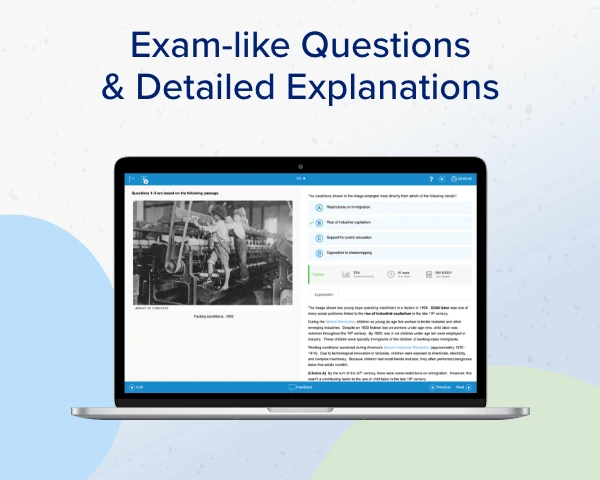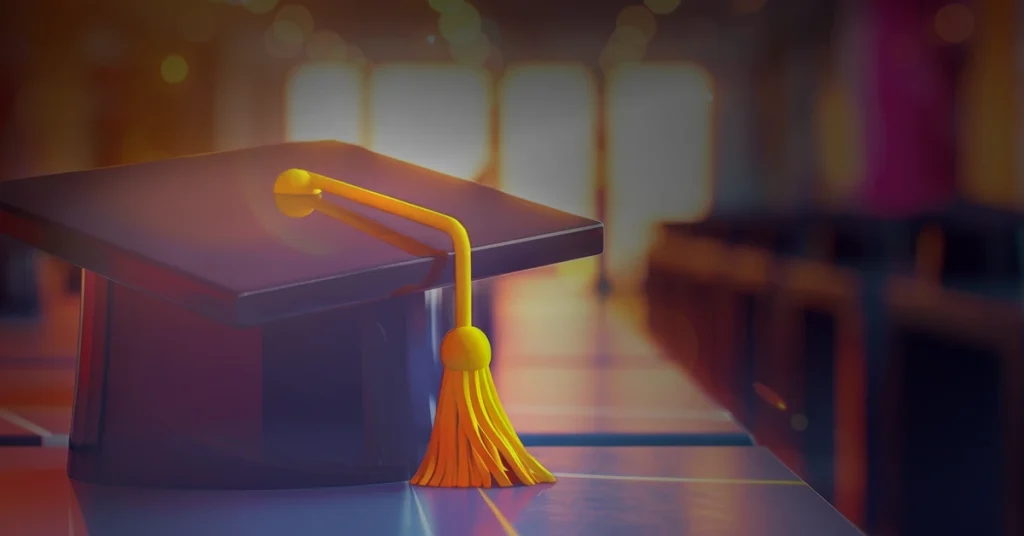The College Board®'s 2024 recalibration of AP® exam scores for nine popular courses has drawn considerable interest among educators. These adjustments, rooted in the Evidence-Based Standard Setting (EBSS) process, maintain the integrity of AP scores by aligning them with consistent student performance data rather than fluctuating grading trends. Changes focus on ensuring that AP scores truly reflect students' content mastery.
Understanding the 2024 AP Score Recalibration Process
The EBSS process is a robust method that draws on extensive data and input from a large pool of experts.1 Unlike traditional panels that typically include a small group of educators, the EBSS process leverages a much broader base, utilizing fine-grained student performance data to set more precise performance standards.
One of the key strengths of EBSS is its ability to prevent the drift of AP scores over time. By anchoring performance standards in consistent data rather than college grading trends, the EBSS process ensures that AP scores remain a reliable indicator of student proficiency.
Digital data collection technologies have played an important role in this process, allowing for the gathering and analysis of large-scale data in real-time. These technologies provide a granular understanding of student performance, enhancing the accuracy and efficiency of the standard-setting process.
College faculty also play a pivotal role in the EBSS process, bringing their subject-matter expertise to the table. Their involvement helps ensure that standards are rigorous and aligned with college readiness, maintaining the relevance and rigor of AP scores.

2024 AP Exam Score Changes In Specific AP Subjects
The changes, which had notable impacts on popular courses such as AP Calculus AB and AP U.S. History,2 have sparked discussions about grade inflation. But, the College Board maintains that the recalibrations are intended to better reflect college-level expectations, not to artificially inflate scores.3
For instance, in AP Calculus AB, the success rate for students scoring 3 or higher is now 64%, a shift from 2023’s passing rate of 58% that more accurately reflects the challenges students face in this subject.4 Similarly, AP U.S. History saw a significant increase in the percentage of students earning 4s and 5s, with the success rate rising to 72% — a change from 25% in 2023 that aligns more closely with college-level grading.5
Impact on 2024 AP Pass Rates
The recalibration has brought about significant changes in pass rates across various subjects, particularly those with historically lower success rates.6 One of the most notable impacts is the increase in pass rates for the 9 AP subjects that have undergone the recalibration process over the longest period of time — the past 3 years — including AP Macroeconomics and AP Microeconomics. These subjects, which have traditionally seen lower success rates in the 50th percentile, now fall within the typical 60%-80% pass rate range, indicating a more accurate measure of student readiness for college-level coursework.7 This shift highlights the effectiveness of the recalibration in bringing these subjects in line with broader AP exam performance expectations.
The recalibration process also ensures that AP scores are consistent with historical college grading standards, particularly those prior to 1990. This alignment helps prevent the inflation of AP scores that might otherwise occur due to rising college grades, maintaining the rigor and integrity of the AP program. For instance, the AP U.S. History 72% success rate better reflects student proficiency and is more closely aligned with historical grading practices in college history courses.
Analysis of 2024 AP Score Distributions
The recalibrated scores have resulted in significant shifts in AP score distributions. For example, while the overall success rate for AP Biology remained stable with a pass rate percentage in the mid-60s, the percentage of students earning 4s and 5s increased, thanks to changes in the scoring rubric.3 Similarly, subjects such as AP Chemistry and AP U.S. History have seen increased pass rates, aligning them more closely with historical college grading standards.
These changes are visually represented in the score distributions for selected subjects, highlighting the impact of the recalibration process. The data between both tables compares scores from 2024 and 2019, underscoring the College Board's efforts to maintain the rigor and credibility of AP exams, ensuring they remain a reliable indicator of student readiness for college-level coursework.
2024 AP Score Distributions for Selected Subjects3
| Exam | 5 | 4 | 3 | 2 | 1 | 3+ |
| AP English Language & Composition | 9% | 21% | 24% | 29% | 17% | 54% |
| AP English Literature & Composition | 13% | 27% | 32% | 17% | 11% | 72% |
| AP Calculus AB | 18% | 20% | 26% | 23% | 13% | 64% |
| AP Calculus BC | 41% | 17% | 22% | 11% | 9% | 80% |
| AP Statistics | 14% | 21% | 27% | 23% | 15% | 62% |
| AP Biology | 16% | 28% | 24% | 20% | 12% | 68% |
| AP Chemistry | 17% | 27% | 31% | 17% | 7% | 75% |
| AP Environmental Science | 9% | 23% | 27% | 25% | 16% | 59% |
| AP Physics 1 | 7% | 18% | 24% | 29% | 22% | 49% |
| AP Physics 2 | 15% | 23% | 30% | 21% | 11% | 68% |
| AP Physics C: Mechanics | 32% | 28% | 15% | 13% | 12% | 75% |
| AP Physics C: Electricity & Magnetism | 33% | 20% | 14% | 18% | 15% | 67% |
| AP U.S. History | 12% | 34% | 26% | 18% | 9% | 72% |
| AP World History | 10% | 23% | 31% | 22% | 14% | 64% |
| AP Human Geography | 11% | 21% | 28% | 24% | 16% | 60% |
| AP U.S. Government | 13% | 24% | 36% | 19% | 8% | 73% |
| AP Macroeconomics | 16% | 22% | 24% | 20% | 18% | 62% |
| AP Psychology | 14% | 23% | 24% | 22% | 17% | 61% |

2019 AP Score Distributions for Selected Subjects3
| Exam | 5 | 4 | 3 | 2 | 1 | 3+ |
| AP English Language & Composition | 10% | 18% | 31% | 28% | 13% | 59% |
| AP English Literature & Composition | 6% | 16% | 33% | 33% | 12% | 55% |
| AP Calculus AB | 19% | 20% | 20% | 23% | 18% | 59% |
| AP Calculus BC | 43% | 18% | 19% | 14% | 6% | 80% |
| AP Statistics | 14% | 20% | 26% | 24% | 16% | 60% |
| AP Biology | 7% | 22% | 36% | 26% | 9% | 65% |
| AP Chemistry | 12% | 19% | 24% | 25% | 20% | 55% |
| AP Environmental Science | 8% | 20% | 29% | 26% | 17% | 57% |
| AP Physics 1 | 7% | 18% | 31% | 29% | 15% | 56% |
| AP Physics 2 | 14% | 21% | 34% | 24% | 8% | 69% |
| AP Physics C: Mechanics | 34% | 23% | 18% | 13% | 11% | 75% |
| AP Physics C: Electricity & Magnetism | 35% | 18% | 15% | 16% | 15% | 68% |
| AP U.S. History | 11% | 20% | 34% | 23% | 12% | 65% |
| AP World History | 8% | 19% | 29% | 28% | 16% | 56% |
| AP Human Geography | 11% | 19% | 29% | 24% | 17% | 59% |
| AP U.S. Government | 12% | 25% | 28% | 21% | 14% | 65% |
| AP Macroeconomics | 18% | 22% | 27% | 18% | 15% | 67% |
| AP Psychology | 20% | 25% | 23% | 19% | 13% | 68% |
These 2024 and 2019 distributions illustrate the recalibration's impact, with shifts in the percentage of students achieving scores of 3 or higher, aligning with the updated performance standards.
Essential Resources for Teachers
Navigating the 2024 AP score changes requires the right tools. The College Board has enhanced AP Classroom with updated practice questions and instructional materials aligned with the recalibrated standards. The revised Course and Exam Descriptions (CEDs) offer clear guidance, helping you align your instruction with the latest expectations.4
AP Classroom can provide foundational support, with UWorld Courses for AP offering a comprehensive curriculum with ready-to-implement instructional tools, classroom activities, in-depth practice questions, and detailed answer explanations that go beyond basic exam prep. UWorld’s robust data and reporting tools allow for targeted interventions at the student, class, and district levels, ensuring personalized support.
For optimal results, you can combine AP Classroom and UWorld resources. This approach provides a well-rounded preparation strategy, from initial concept introduction to rigorous exam practice.
Tips for Preparing Students for the Recalibrated AP Exams
To help students succeed under the new scoring standards, focus on building proficiency in key skills emphasized in the recalibrated exams, such as evidence-based writing and complex problem-solving. Incorporating updated question types into classroom assessments and utilizing UWorld’s AP resources for instructional support are effective strategies.
Experienced AP teachers recommend using formative assessments throughout the year to track student progress and adjust instruction as needed. Engaging with AP communities and sharing successful strategies with colleagues can also be beneficial in navigating the new scoring landscape.
By adopting these strategies, you can better prepare your students for the recalibrated AP exams and ensure they develop the skills needed to excel under the updated standards.

References
- College Board. (2024). AP Score Changes 2024 [PDF]. Retrieved from https://allaccess.collegeboard.org/allaccess/pdf/ap_score_changes_2024.pdf?SFMC_cid=EM1227321-&rid=47205321
- Sawchuk, S. (2024, August 14). See How AP Exam Scores Have Changed Over Time. Education Week. Retrieved from https://www.edweek.org/teaching-learning/see-how-ap-exam-scores-have-changed-over-time/2024/08
- Pondiscio, R. (2023, September 15). The Great Recalibration of AP Exams. Thomas B. Fordham Institute. Retrieved from https://fordhaminstitute.org/national/commentary/great-recalibration-ap-exams
- Total Registration. (2019). Compare Score Distributions for AP Exams in 2019. Retrieved from https://www.totalregistration.net/AP-Exam-Registration-Service/Compare-Score-Distributions.php?id=8&year=2019
- College Board. (2023). AP Score Distributions 2023. Retrieved from https://apstudents.collegeboard.org/about-ap-scores/score-distributions/2023
- College Board. (n.d.). AP Score Distributions. Retrieved August 19, 2024, from https://apstudents.collegeboard.org/about-ap-scores/score-distributions
- Petrilli, M. (2024, July 20). Changes in AP Scores: 2022 to 2024. Higher Ed Data Stories. Retrieved from https://www.highereddatastories.com/2024/07/changes-in-ap-scores-2022-to-2024.html




